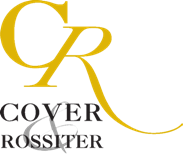This process is called “recharacterizing” your conversion and it allows you to simply erase the conversion, as if it never occurred.* If you elected to pay the tax on a 2010 conversion in 2011 and 2012, those taxes will no longer be due. If you paid the taxes on the conversion in 2010, you can amend your return and obtain a refund. The following points summarize the process:
- Step One – decide if you want to recharacterize by comparing the current value of your Roth IRA to its value on the date of conversion. If the investment loss is small, it may not be worth going through the process. For example, if you converted a traditional IRA worth $10,000 to a Roth and after the conversion the value of your Roth fell to $8,000, your tax savings would be $500 if you are in the 25% tax bracket, plus any state and local taxes.
- Step Two - notify your Roth custodian that you intend to recharacterize and obtain the paperwork you must complete to undo the conversion. The recharacterization must be done by “IRA-to-IRA transfer” – if you take the money yourself, you will have a distribution. THE NOTIFICATION AND THE TRANSFER MUST TAKE PLACE BY OCTOBER 17, 2011 FOR ALL 2010 CONVERSIONS.
- Step Three – file an amended 2010 federal and, if necessary, state return by the filing deadline (three years after the original return was filed).
- Step Four – consider re-converting to a Roth – after an IRS-imposed waiting period (30 days after recharacterization or one year after the initial conversion, whichever is later), you are free to convert again. You will convert a lower amount and thus pay less taxes.
*This option is NOT available if you made an in-plan conversion, which is irrevocable. An example is a conversion of all or a portion of your traditional 401(k) plan to a Roth 401(k) plan.
Call or email Diane Burke at 302.656.6632 or DBurke@CoverRossiter.com for more information and/
or assistance in the recharacterization process.
